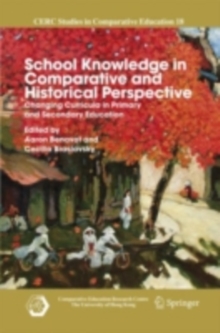
Citizenship Education in Asia and the Pacific : Concepts and Issues PDF
Edited by W.O. Lee, David L. Grossman, Kerry J. Kennedy, Gregory P. Fairbrother
Part of the CERC Studies in Comparative Education series
Description
It is a great pleasure to present this book, edited by a distinguished team at the Hong Kong Institute of Education and with excellent contributors from nine countries in the region and beyond.
The book is a truly comparative work which significantly advances conceptual understanding.
The comparisons undertaken are at many levels and with different units for analysis.
One chapter undertakes comparison in two cities (Hong Kong and Guangzhou), three chapters make comparisons between two eountries (South Korea and Singapore; Solomon Islands and Vanuatu; South Korea and China); and five chapters undertake eomparisons across the whole region.
Other on individual countries or, in one case, on a single schoo!.
In addition, ehapters foeus several chapters examine the attitudes and roles played by individuals and groups within societies.
The book is thus an admirable example of the vitality of the field of comparative education in selecting different units for analysis and in examination of issues from diverse angles.
Within the book, moreover, readers will find a fascinating array of settings and environments.
On the one hand, for example, is Japan with its relatively homogenous eulture, a population of 126 million, and a strong national identity based on language and history.
On the other hand is Solomon Islands, which has a population of just 400,000 scattered over 1,000 islands, approximately 90 indigenous languages, and major social problems arising from culture c\ashes, econornic forces, political dyna- mies and legacies of colonialism.
Information
-
Download - Immediately Available
- Format:PDF
- Publisher:Springer Netherlands
- Publication Date:11/11/2013
- Category:
- ISBN:9781402079351
Information
-
Download - Immediately Available
- Format:PDF
- Publisher:Springer Netherlands
- Publication Date:11/11/2013
- Category:
- ISBN:9781402079351










